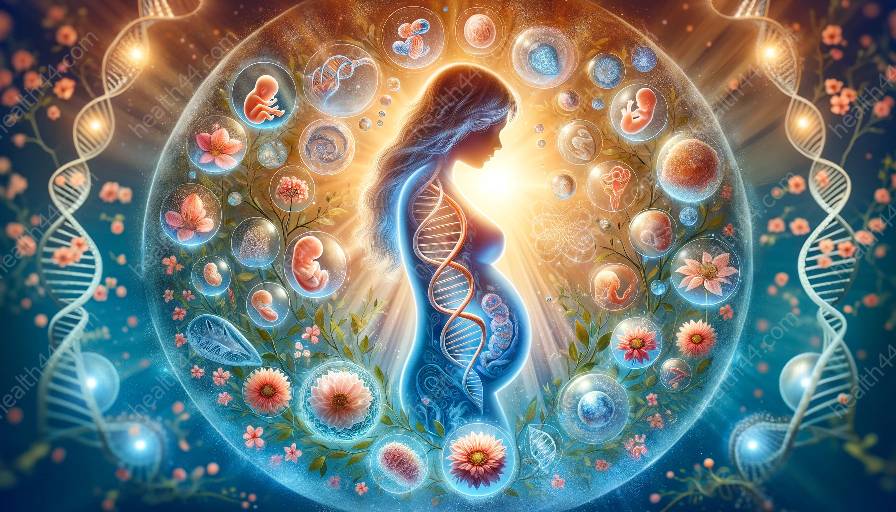Fetal development of body systems varies significantly across different species, offering profound insights into the ways in which life forms evolve and adapt to their environments. The embryonic and fetal stages of development are critical periods during which the body systems of organisms undergo intricate processes of growth and differentiation. This article will explore the captivating diversity in fetal body systems development, shedding light on the biological marvels that underpin the natural world.
Embryonic and Fetal Development
Before delving into the variations across species, it is crucial to understand the general principles of embryonic and fetal development. The early stages of an organism's life involve the formation and growth of its body systems, which eventually enable it to function independently outside the womb or egg. These processes are characterized by the sequential and coordinated development of the nervous, musculoskeletal, cardiovascular, respiratory, digestive, and other essential systems.
Nervous System
The nervous system is fundamental for coordinating various bodily functions and responding to external stimuli. In the fetal stage, the development of the nervous system differs across species, leading to variations in brain size, complexity, and specialized structures. For example, primates exhibit a prolonged gestational period, allowing for extensive neuronal differentiation and the formation of intricate neural networks, which contribute to advanced cognitive abilities.
Musculoskeletal System
Across different species, the musculoskeletal system undergoes unique patterns of development during the fetal stage. Large mammals such as elephants and whales experience remarkable skeletal growth and ossification, which is essential for supporting their massive body sizes. Conversely, smaller animals like rodents exhibit rapid musculoskeletal development, enabling them to acquire agility and dexterity at an early age.
Cardiovascular System
The fetal development of the cardiovascular system varies significantly among species, influencing heart morphology, blood circulation, and overall cardiovascular function. In humans, the intricate development of the heart and blood vessels is crucial for sustaining the demands of a bipedal lifestyle. Meanwhile, in avian species, the unique demands of flight necessitate specialized adaptations in cardiovascular development, such as efficient oxygen delivery and enhanced cardiac performance.
Respiratory System
Respiration is vital for sustaining life, and the fetal development of the respiratory system reflects adaptations to the specific environmental conditions of different species. Aquatic creatures like dolphins and fish exhibit specialized adaptations in lung and gill development, enabling efficient oxygen exchange in water. On the other hand, land-dwelling mammals showcase variations in lung maturation and respiratory adaptations that cater to terrestrial environments.
Digestive System
Species-specific dietary requirements drive the diversity in fetal digestive system development. Herbivorous species like cows and horses undergo significant prenatal gut maturation to process plant matter efficiently. In contrast, carnivorous animals such as cats and dogs develop specialized digestive structures that support the digestion of meat-based diets. This highlights the diverse evolutionary pressures that shape the fetal development of the digestive system.
Significance in Evolution and Adaptation
The variations in fetal development of body systems across different species have profound implications for evolutionary biology and ecological adaptation. These adaptations reflect the intricate balance between genetic predispositions and environmental influences, shaping the anatomical, physiological, and behavioral characteristics of diverse organisms.
Insights into Evolutionary History
Comparing fetal development across species offers valuable insights into their evolutionary histories. By studying similarities and differences in the developmental trajectories of various body systems, scientists can reconstruct the evolutionary relationships among different taxa. For instance, analyzing the fetal skeletal development of mammals has provided evidence for evolutionary homologies, highlighting shared ancestry and developmental patterns across related species.
Ecological Adaptations
The diverse fetal body systems development across species reflects their adaptations to distinct ecological niches. Organisms have evolved to thrive in specific habitats, leading to specialized fetal development of body systems that enhance their survival and reproductive success. From the finned locomotion of aquatic mammals to the winged flight of birds, these adaptive traits stem from the intricate fetal development of body systems tailored to unique environmental challenges.
Implications for Fetal Science
Understanding the variations in fetal body systems development has significant implications for fetal science and human medicine. Insights gained from studying diverse species contribute to our understanding of prenatal development, birth defects, and the potential for regenerative therapies.
Medical Applications
Comparative studies of fetal development provide valuable information for addressing congenital abnormalities and developmental disorders in humans. By elucidating the genetic and environmental factors that influence fetal body systems development, researchers can identify potential targets for therapeutic interventions and preventive measures aimed at improving prenatal health and well-being.
Regenerative Medicine
The study of fetal body systems development in regenerative species can inspire innovative approaches in regenerative medicine. Animals with remarkable regenerative capacities, such as amphibians and certain fish, offer valuable insights into the molecular and cellular mechanisms underlying tissue repair and regeneration. This knowledge holds potential for advancing regenerative therapies and tissue engineering strategies in human medicine.
In conclusion, the variations in fetal body systems development across different species are emblematic of the remarkable diversity and adaptability of life on Earth. By unraveling the intricacies of embryonic and fetal development, scientists continue to gain profound insights into the evolutionary, ecological, and biomedical aspects of life, paving the way for groundbreaking discoveries and transformative advancements in developmental biology and medicine.


